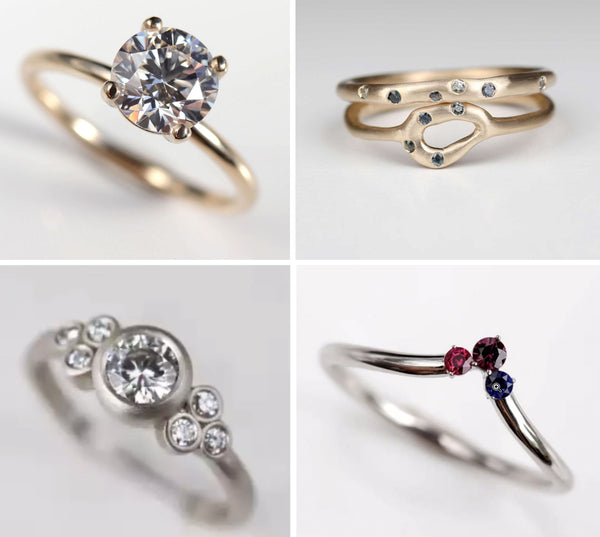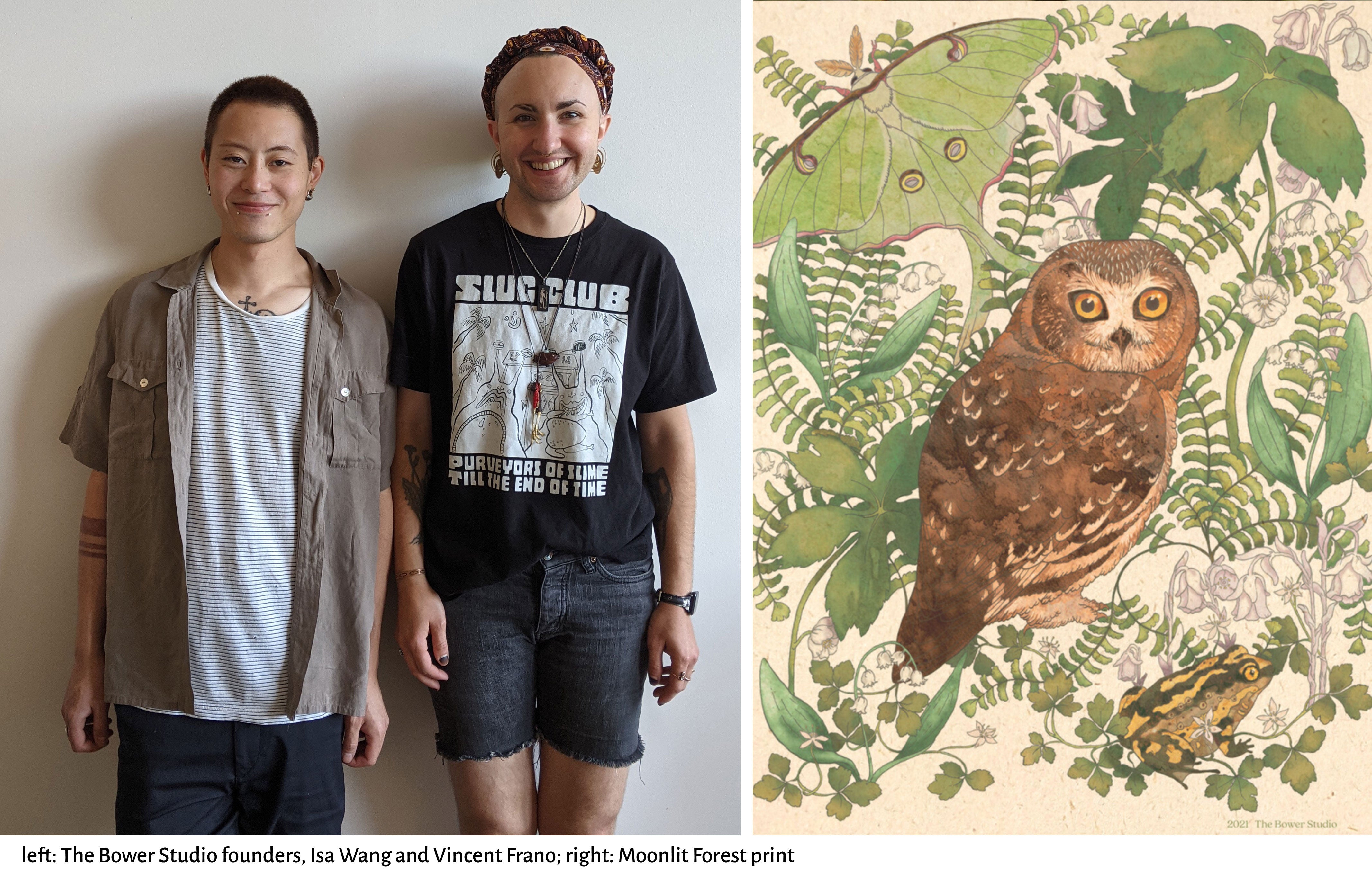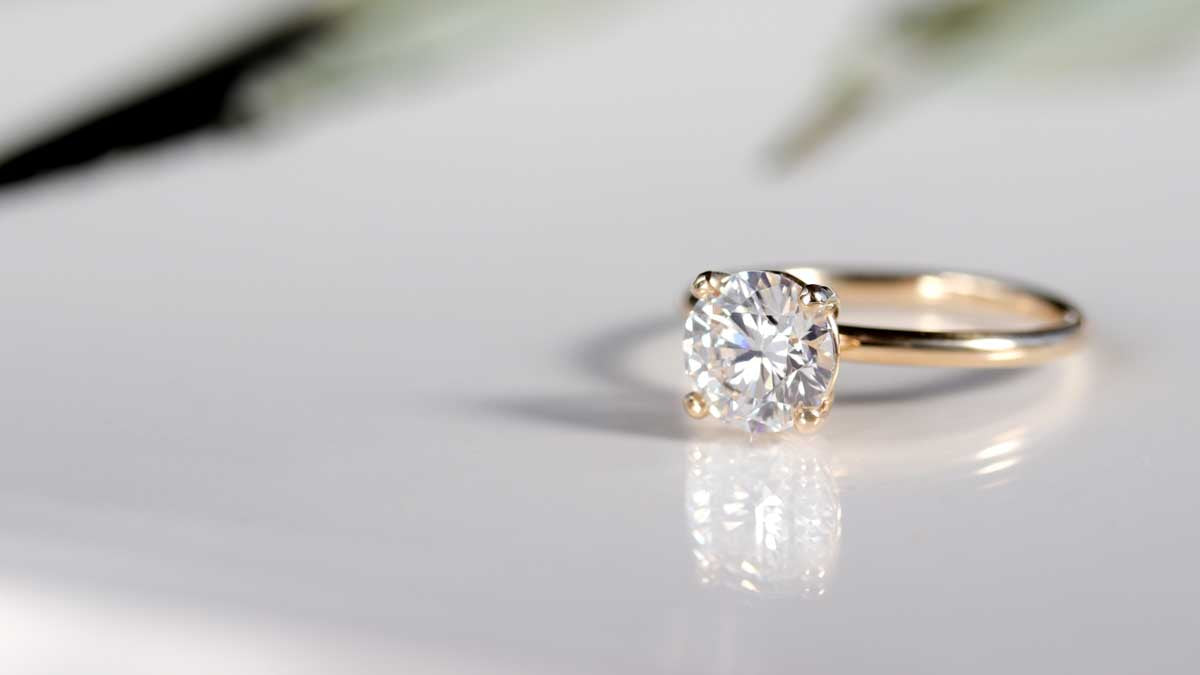To Have but Not Necessarily to Uphold: Wedding and Engagement Ring Traditions
Marriage is one of life’s most significant occasions. It marks the start of a new beginning - a change. Change often comes with excitement and the faint hum of uncertainty.
Is that why tradition is such a significant piece of the ceremonial pie? Many of us find comfort and stability in tradition. Amidst the chaos of a wedding, tradition is the steady anchor we rely on before crossing into the threshold of a new life. But whose traditions are we upholding when we choose to observe custom?
At Aide-mémoire, we often get asked a lot of questions surrounding tradition - especially ring traditions. Common questions we field are: “What should a traditional wedding or engagement ring look like?”, “After the ceremony, what is the traditional stacking order for my rings?”, and “Can a man wear an engagement ring?”
We like to emphasize that there is no right or wrong answer when it comes to your wedding or engagement ring. Though certain traditions have been heralded for centuries, we refer to them as guidelines, not absolutes. If the thought of a traditional basket solitaire engagement ring or plain gold wedding band doesn’t excite you, that’s okay. Choose what makes you happy. If you identify as male and would like to don an engagement ring, even though it’s not historically traditional, - go for it! We encourage you to embrace your spirit. Start your own traditions if the existing ones don’t suit you.
Over the years, our customers have selected many thoughtful, inspired engagement and wedding ring designs that span traditional to more modern, and some that are uniquely personal.

top row, from left to right:
7mm Basket Solitaire, Sculpted Engagement Set with Light Green Sapphires
bottom row, from left to right:
Bezel-set 7 Stone Cluster Ring, Diamond V Contour Band with Chatham Ruby, Chatham Dark Blue Sapphire, and Garnet
After the last champagne toast and your big day comes to a close, how do you wear your engagement ring and wedding ring together? Let’s tackle this question with some background history on the ring finger - commonly known as the fourth finger on the left hand. The ancient Egyptians revered this particular finger as the vena amoris, or the vein of love. They believed the ring finger housed a vein running directly to the heart. The Greeks and Romans adopted this fabled story, and it eventually found its way into our modern times. In the west, wearing your wedding band stacked below the engagement ring is now the traditional practice. It rests close to the vena amoris, and is shielded by the engagement ring.
Though the vena amoris paints a beautiful picture, we support our customers in doing whatever feels right for them. Aran’s aesthetic preference is to wear the engagement ring on the bottom and the wedding ring on top.
Practically speaking, if your engagement ring loosens over time and resizing is not an immediate option, we suggest wearing the wedding band on the outside to safeguard your engagement ring from slipping off. Make sure your wedding band is sized correctly so it's snug around your finger.

Traditional customs can be a special part of your engagement and wedding ceremony. Welcome them, but don’t let them weigh you down. Give yourself room to do what feels right for you. It’s what’s meaningful for you that matters most.

